This week’s #BeConnected Explore Our Campus looks at the first years of art at the University of Stirling.

The tradition of collecting art at the University of Stirling goes back to its founding in 1967. It was decided from the start that one per cent of the capital cost of new buildings should be made available for works of art, to improve the internal and external environment.
An Art Committee was formed and this made decisions about these early purchases, taking advice from art experts in Scotland at the time. Douglas Hall, first Keeper of the Scottish National Gallery of Modern Art, was invited to join this committee and he encouraged the University to develop an art policy and to purchase and exhibit notable works. This was felt to be especially important as no other such major art collection existed locally. Click here to see a short film about the beginnings of the collection.
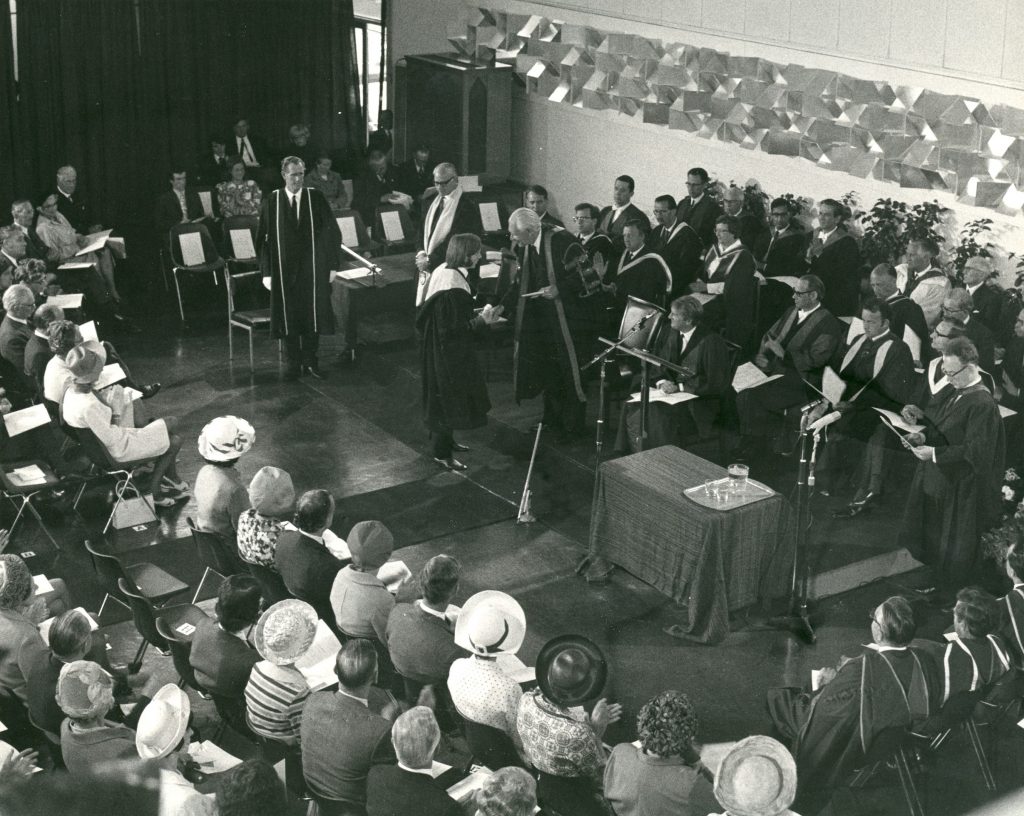
In these early days, site-specific works were commissioned and an excellent example of this is the wall-mounted steel sculptural panel by Mary Martin which was originally designed for the Pathfoot Dining Room, where it can be seen above during the 1971 graduation ceremony. It now hangs in the Crush Hall – you can read more about the piece here.
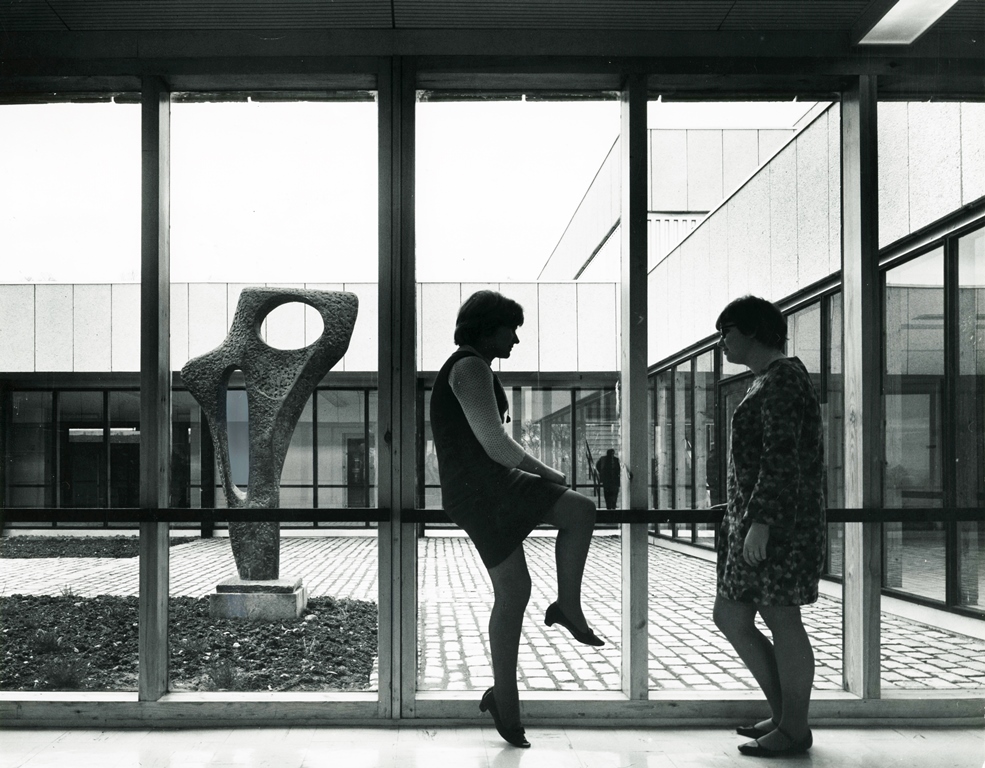
Major works were also borrowed, such as Barbara Hepworth‘s iconic sculpture ‘Figure (Archaean)’ (shown above) which came on permanent loan from the Scottish Arts Council, was subsequently gifted, and has remained in the same Pathfoot courtyard ever since.
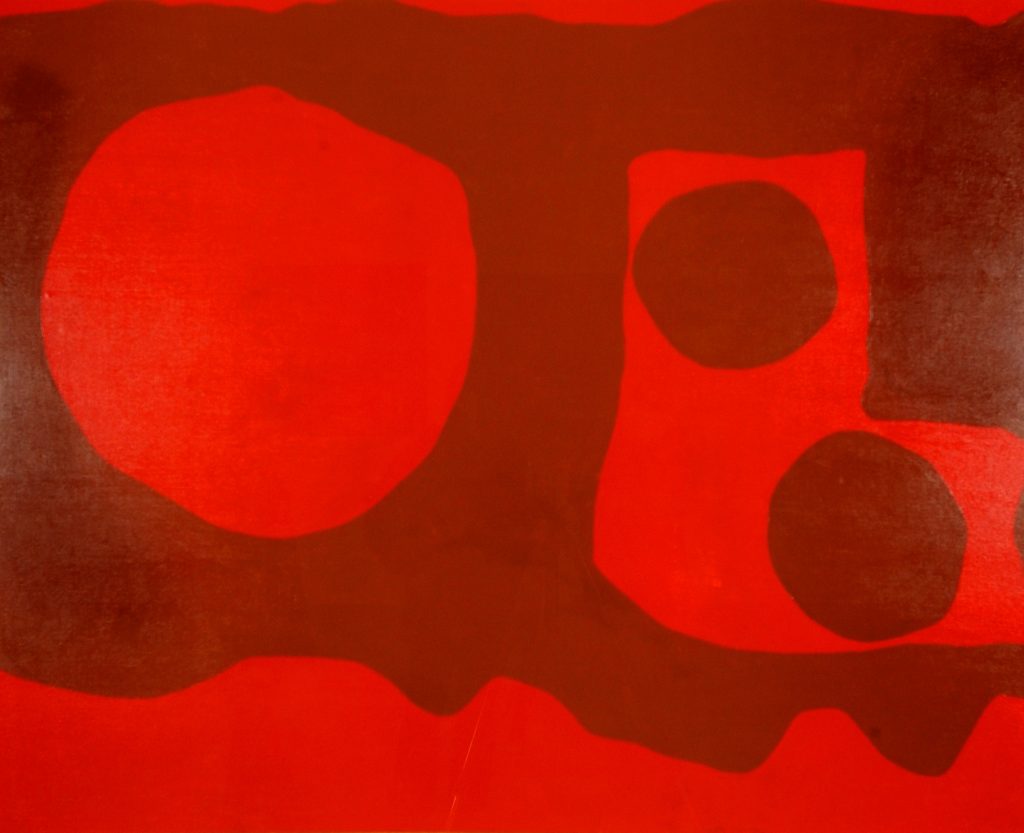
(Oil on canvas, 1967)
Purchased from the Waddington Galleries, London, for the new Art Collection in 1967
Works were acquired chiefly from galleries such as the Waddington in London, the Compass Gallery in Glasgow and the Richard Demarco Gallery in Edinburgh. The fine works collected in that period were by contemporary artists, in keeping with the modernist architecture of the Pathfoot Building. They included paintings by Patrick Heron, Sir Robin Philipson, Michael Tyzack and Jon Schueler and sculptures by Eduardo Paolozzi and Justin Knowles. Along with the major gift of 14 paintings by eminent Scottish Colourist J D Fergusson, these were displayed around the Pathfoot Building, making art and culture part of the everyday experience at the University. This was the stated aim of the first Prinicipal Tom Cottrell, who, although a scientist, was also a knowledgeable art connoisseur who believed that artworks should be accessible to all. These early acquisitions perfectly expressed the spirit of the age and Tom Cottrell’s confident hopes for the new University. As Douglas Hall recalled in 2011 ‘ Abstract art held the field. All right, the art we bought in those few years could shock. But it was a visual shock, not a moral one. People missed the old themes, and were dazzled by the bright colours and vivid shapes. These were just what Principal Cottrell wanted.’
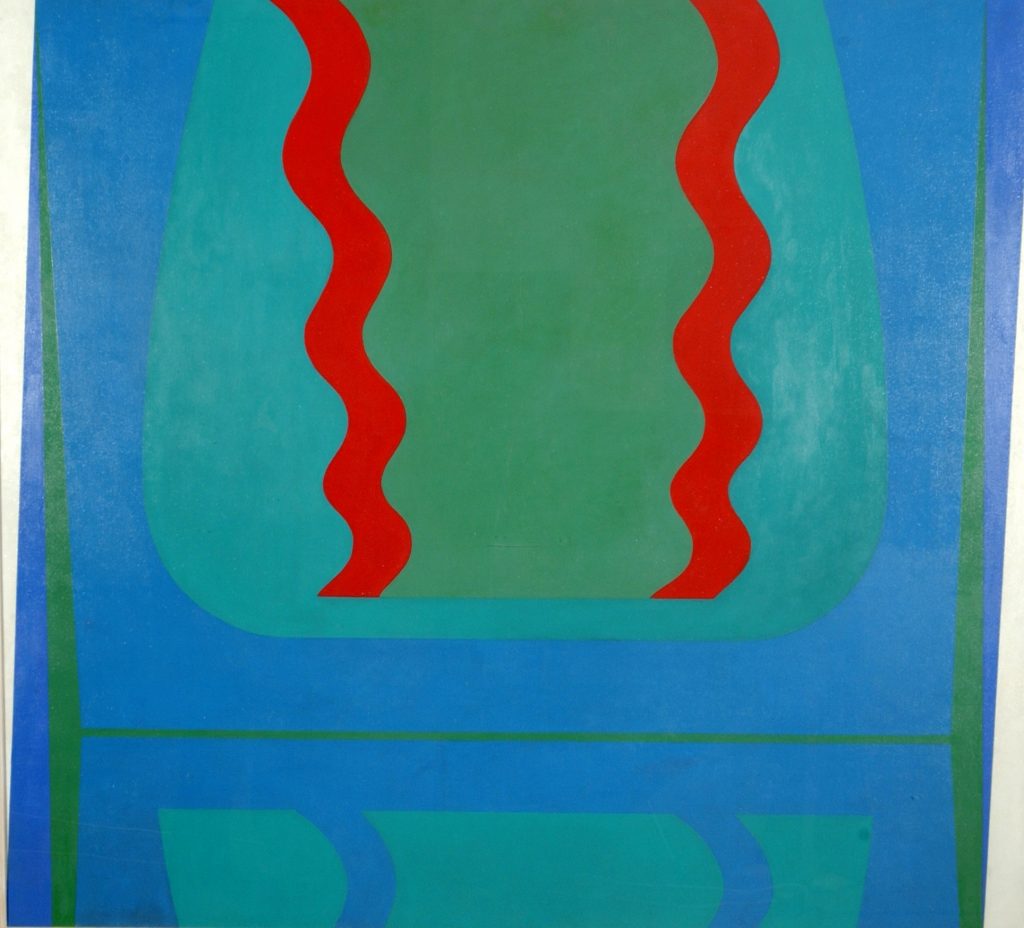
(Acrylic on cotton, 1964)
Purchased from the Richard Demarco Gallery for the new Art Collection in 1967
The commissioning and purchasing of artworks however was only part of the art story at Stirling. Students and staff in the late 1960s and early 1970s also had the opportunity to listen to an annual art lecture given by an expert art critic and accompanied by a major exhibition, and there was a constantly changing, rich and varied programme of temporary exhibitions, which were organised by Matilda Mitchell, the first art curator.

At first pictures were hung in Pathfoot around the spacious main concourse and A corridor (above), with the long-since disappeared ‘J Lounge’ upstairs being used for smaller exhibitions of local artists. Sometimes the works were for sale (the Collection also acquired works in this way), and there were also touring exhibitions from the Scottish Arts Council eg drawings by Albrecht Durer, and paintings by Joan Eardley. Exhibitions organised by Stirling also sometimes subsequently went on tour to other locations in the UK

From 1971 onwards, there was a specially allocated gallery space (see photo above) in the newly built MacRobert Centre, and as Matilda Mitchell recalls, the many exhibitions were not restricted to that space but also ‘crept into the foyer, indeed into the small foyer on the way in to the little theatre, along the walls to the café and eventually outside into the grounds’.

Several catalogues and price lists have survived from these early days. The Art Collection purchased the work below – ‘Plum Tree I’ – from this Duncan Shanks exhibition at the MacRobert Gallery in 1973.
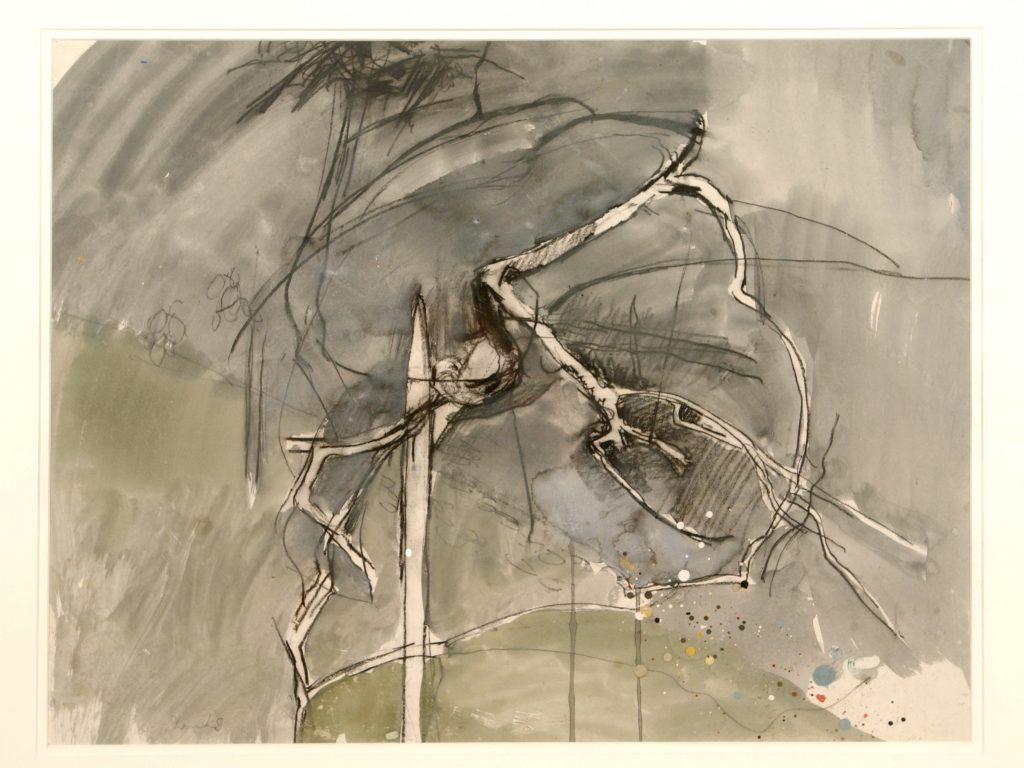
(Watercolour and chalk)
Temporary exhibitions did not always consist of pictures. Matilda Mitchell recalls one more unusual show:
For some six months, large boxes of about 4ft x 3ft, filled with local earth, occupied two or three of the car parking spaces outside Garden Cottage. This became one of the centre points of the Mark Boyle show. He always worked with his wife Joan Hills as collaborator but when his two children grew up they all worked together and the exhibitions became the Boyle Family exhibitions. What grew in these boxes was just what was already in the soil and what the wind brought. Wild flowers flourished and when we brought the boxes into the Gallery, they flourished better still and the spiders were able greatly to increase their webs. As you would expect, going into an art gallery, we put in our ‘art viewing’ lenses and suddenly nature’s casual offerings became objects of great natural beauty and fascination.
They also replicated several large sections of London pavements in resin, complete with slabs, kerbs, gutters, cigarette butts, in one a discarded trainer, and assorted pleasing rubbish. With art gallery lenses firmly in place, these too became images of compelling interest. But could we see clearly enough to purchase? I am afraid not. They were expensive. It was a wonderful show.
Matilda Mitchell speaking at The Principal’s Art Lecture in 2007
As well as these temporary exhibitions, staff and students were also given the opportunity to purchase good quality fine art prints when London Graphic Arts set up shop in the J lounge. For two years running (1968 and 69), over £1000 worth of pictures were sold in three days. The Art Collection enjoyed a 10% commission on sales, which also helped to fill the walls of the staff offices and lectures rooms. The Victor Vasarely print below was purchased for the Collection at the first of these sales.
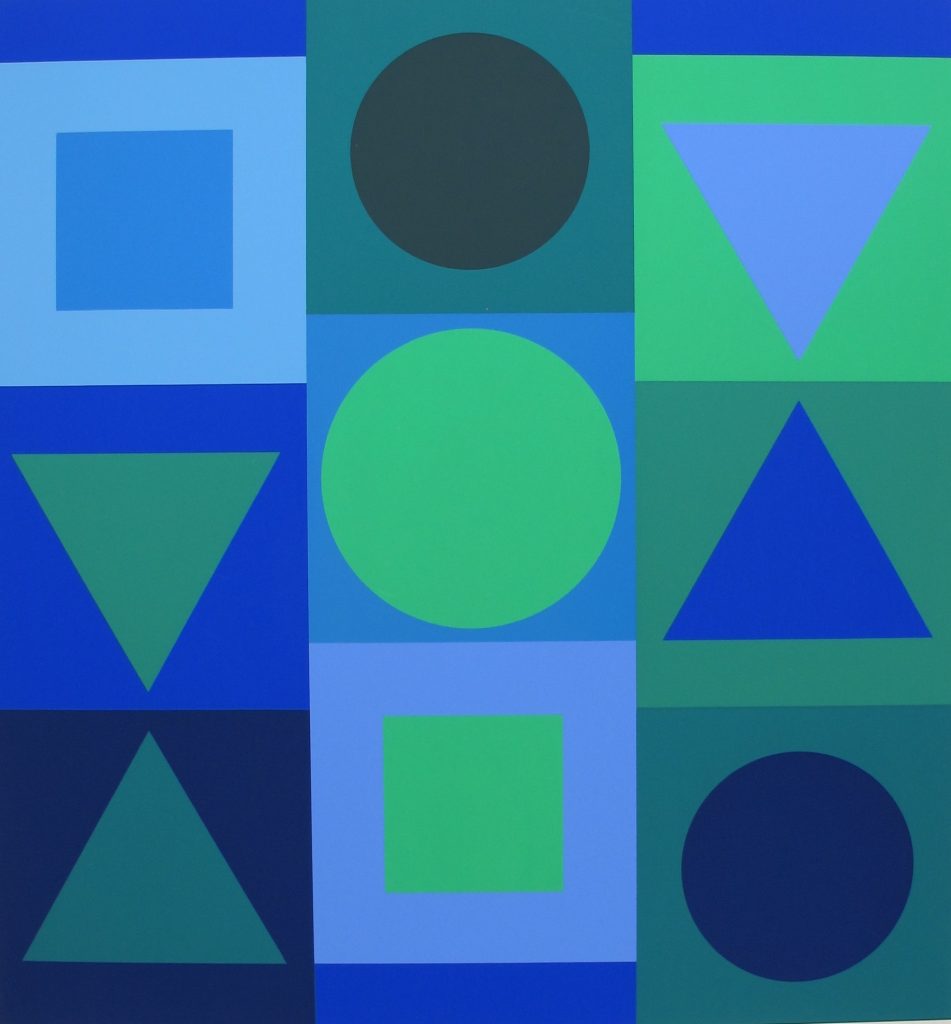
(Screenprint, 94/175, 1968)
As the permanent collection grew, works were displayed in the new University buildings as they were completed. Below, a work entitled ‘Frosted Window’ by Barbara Balmer (purchased in 1973) is seen hanging in the staff room, in Cottrell.
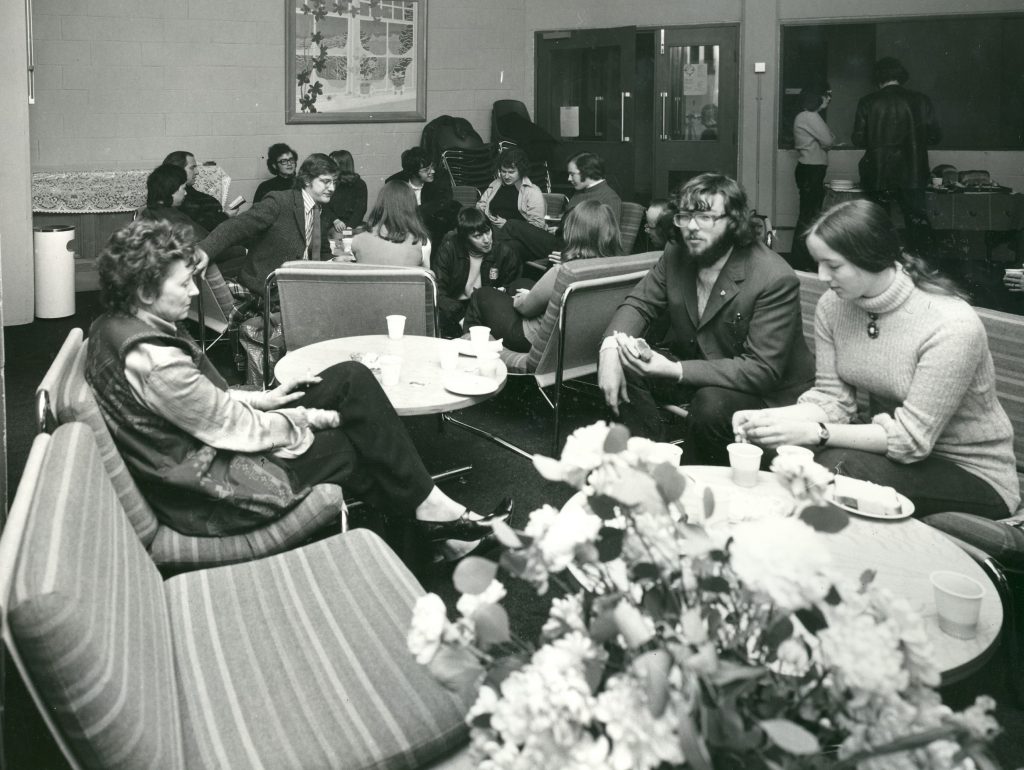
Not all art initiatives were successful however. A scheme to offer framed prints on loan to students for their rooms was abandoned due to lack of interest.
